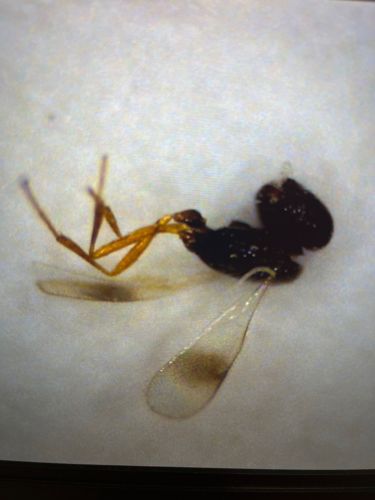Ant Wasp (likely a parasitic wasp)
Scientific Name: Difficult to determine exact species from image, possibly in the family Braconidae or Ichneumonidae
Order & Family: Hymenoptera (Order), Braconidae or Ichneumonidae (Family likely due to appearance)
Size: Typically small, often 2-15 mm depending on species, with some larger (up to several cm). The specimen appears to be in the smaller range.

Natural Habitat
Widely varied, often found in environments where their host insects are present, ranging from forests, grasslands, agricultural fields, to urban gardens.
Diet & Feeding
Adult parasitic wasps typically feed on nectar, honeydew, or other plant secretions. Larvae of parasitic wasps are parasitoids, meaning they develop by feeding on or within a single host insect (e.g., caterpillars, aphids, beetle larvae, other insect eggs), eventually killing it.
Behavior Patterns
Female wasps lay their eggs on or inside a host insect. The emerging larvae then consume the host. Adults are often solitary and may be seen flying low searching for hosts or feeding on flowers. Many species are highly host-specific.
Risks & Benefits
Generally beneficial insects, as they are natural enemies of many common agricultural and garden pests, making them valuable for biological pest control. They pose virtually no risk to humans; they rarely sting, and if they do, it's typically mild and not aggressive, unlike social wasps.
Identified on: 9/5/2025